(This post contains Amazon affiliate links, which means I will receive a small commission from items purchased through them. Thanks so much for your support and for helping us create free content like this blog post!)
We’ve had some discussion about beard oil in our Facebook Group, Saponification Nation, so I thought I’d share my process for formulating a great beard oil!
All you really need to make a great beard oil are 4 components:
- Carrier Oils
- Essential Oils (or Synthetic Fragrance Oils)
- Bottle & Cap
- Label
NEW BOOK! Check out Men’s Grooming Recipe Book on Amazon.com.
CARRIER OILS
Let’s go through these one by one. First up, carrier oils. There are dozens of different carrier oils to be employed in beard oil. Some have their advantages by their utility and use, while others have their advantages by their price. Let’s look at a few of my favorites:
- Sweet Almond Oil
- Sweet Almond oil has a light texture and it can easily penetrate through the skin cells, therefore it is able to dislodge debris and dirt that has accumulated on (and under) the hair follicles and skin pores. Sweet Almond Oil is reasonably priced, and has a steady shelf life, thus a great choice for a carrier oil for any and all beard products.
- Argan Oil
- Argan oil is most commonly used as a moisturizer to hydrate and soften skin and hair. With its high vitamin E and fatty acid content, Argan oil is the ideal product to beard follicles a natural boost. It absorbs easily and is non-greasy and non-irritating, which makes it a great choice for beard oil. The less greasy your beard oil is, the better. Nobody likes a greasy, oily cell phone after taking a call. Argan is expensive, but worth it. Even when used in small quantities, Argan adds an immense benefit to beard oil.
- Apricot Kernel Oil
- Apricot Kernel oil is rich in plant antioxidants as it is a good source of vitamins A and C but also have vitamins E, K, and even niacin. They have a huge mineral content including copper, magnesium, manganese, phosphorous and potassium. It has excellent softening and moisturizing properties that aid skin, scalp, and hair as it helps skin retain its elasticity and suppleness. This is a good choice for beard oil, however the price and shelf life might factor in.
- Avocado Oil
- The health benefits of avocado oil come from the presence of high quantity monounsaturated fats. Because of its lubricating nature, the oil coats all the strings of beard follicles, thus making it shinier and stronger. This is a great choice for beard oil, as it is priced affordably and has a steady shelf life.
- Castor Oil
- When used in small quantities, castor oil makes for a [very] shiny beard. Most of the glimmer you see from a beard that has just been doused in a quality beard oil will most likely come from castor. For me, Castor is a must. And, much like Argan oil, it doesn’t take much at all to make a lasting difference. Even as little as 5% in the overall carrier oil blend will add great benefit. Plus, it is inexpensive and has a very long shelf life.
- Coconut Oil
- I would recommend using Coconut oil in only very small quantities, as it will become solid in colder temperatures. That said, using small quantities adds great benefit to beard oil, is inexpensive and has a very long shelf life.
- Fractionated Coconut Oil
- Though I often see it on ingredient lists, I do not recommend this oil in beard oil recipes. It is incredibly greasy and is hard to wash off. The reason it is utilized a lot in the beard oil community is the extremely long shelf life and affordability, but I personally do not believe it is worth it.
- Grapeseed Oil
- Grapeseed oil is a great choice for beard oil, because it contains a lot of vitamin E, which is necessary for hair growth, and health. The extensive proteins, minerals, and the linoleic acid it contains also offer lots of benefits for hair. The price is great, but the shelf life is suspect, so be advised. When used in smaller quantities, I think you will be just fine.
- Jojoba Oil
- The crown jewel of all carrier oils for beards. Yes, it is incredibly expensive, but profoundly worth it in my opinion. Much like Castor and Argan, the benefits are through the roof, and it is non-greasy.
There you have it. These are my very favorite (and a few not-so-favorite) carrier oils for beard oil recipes. After reading through each, you might have noticed a trend – I hate greasy oils in my beard. Yes, of course any oil blend in my beard is bound to be a bit greasy, but the carrier oil selection you make can create a SERIOUS difference in the levels of greasiness. Using oils like Olive and Fractionated Coconut will still make for a great beard oil, but it will indeed be far more greasy to the touch than a blend with Argan, Castor and Jojoba.
Furthermore, you can warrant the higher prices of these oils by researching the market. Look around at the top brands in the industry and notice their prices. For 1 ounce of beard oil, some companies are charging upwards of $40.00. You and I both know that when broken down into such small quantities, even when including the fragrance, bottle, cap and label, that a bottle might cost you $3 or $4 at most, depending on your current economies of scale. So, even charging $18.00 for a bottle (which is below the market standard), you are still making a good margin return.
So, don’t be afraid to spend a little money on better raw materials. Your customers will notice, and they will pay good money for it. Besides, you and your company are worth it.
ESSENTIAL OILS (OR SYNTHETIC FRAGRANCE OILS)
First off, I don’t personally recommend using synthetic fragrance oils for beard oil. Even the muskier, meant-for-men scents don’t sit right with me, as they smell, well…inauthentic. But, that is subjective to my own sensibilities, so if you choose to use synthetics, more power to you!
Men have a vast and more-complicated-than-you-think set of scents that they admire. Anything from woodsy to floral is on the table for men. That said, I would recommend slightly heavier tones that are met with brighter notes, such as a Clove Bud met with some Rosemary and Sweet Orange. This gives a more balanced approach to scent-blending for men, as opposed to just thinking that all men enjoy woodsy stuff only.
I wrote a book specifically about essential oil blends for men. You can check it out here.
BOTTLE & CAP
If you decide to go with either a 1 oz. or 2 oz. bottle, your options are pretty straightforward. The industry standard is 1 oz., so let’s look at some options:
SHAPE
- 1 oz. Amber Boston Round bottles are by and large the most popular beard oil bottle on the market, but that doesn’t mean you have to go that route. But if you do, check these guys out.
- Freund Container offers a “Blake Bottle,” which is more of a boxy, square shape, as opposed to the more available boston rounds.
COLOR
- Sunburst Bottle also carries their Boston rounds in clear, blue and yellow. If your branding fits, don’t be afraid to think outside the box when it comes to the color of your bottle.
- Freund Container has a “Frosted 1 oz. Boston Round,” which is really cool!
I don’t recommend plastic.
CAP (OR APPLICATOR)
- Standard Caps
- If you go with a standard, screw-on cap, be advised that you will also need an “orifice reducer,” which is a small piece of plastic that is put into the neck of the bottle before the lid is screwed on. This is so only a small amount will come out upon each user’s application, as opposed to it come gushing out, or heaven-forbid, they knock it over and their $25 just went down the drain.
- Dropper
- Personally, I don’t like using dropper applicator for beard oils. I prefer the standard screw cap with the orifice reducer. It is just one less step I have to take. That said, it is totally personal preference, and there is something rather neat about seeing a glass jar with a dropper applicator as the cap.
- Spray
- Yes, every beard oil recipe I’ve ever experimented with will spray from a sprayer. I believe this application is becoming more popular.
LABELS
A good beard oil just wouldn’t be complete without a well-designed label. If you need help with beard oil label design, you can contact me anytime at [email protected]. I am well-equipped for label design and enjoy it very much.
Once you do have a good label design, I would recommend uploading it to a professional printer, such as Short Run Labels, Sticker You or Leapin’ Lizard Labels, as they can create a beautifully printed label with the appropriate finish and sheen that repels it from water and sun and/or indoor light damage. The process is very simple and emailing them all your questions and concerns will open the dialogue for getting your labels done. If you utilize my services for design, I can serve as your intermediate for the printing companies, as I’ve worked with just about everyone in the industry at this point!
HAVE FUN!
Coming up with a beautifully blended beard oil is a lot of fun and simple to do. The great thing about it is how popular it is in the marketplace right now, the ease in which it can be produced, and the margins you can generate from each sale. I believe the two most important aspects of a great beard oil is 1) coming up with a blend that is as non-greasy as possible, and 2) a great scent blend made from pure essential plant oils.
Have fun with the process. If you need my help, don’t hesitate to ask questions.
RECIPE:
Based on my opinions of each carrier oil comprised above, I will show you a truly excellent recipe blend, along with a great essential oil blend for men.
The recipe below yields 10 x 1 oz. bottles:
CARRIER OILS:
- Sweet Almond Oil: 6 oz.
- Argan Oil: 1.5 oz.
- Castor Oil: 1.5 oz.
- Jojoba Oil: 1 oz.
ESSENTIAL OILS:
I recommend crafting your essential oil blend at a quantity no more than 3% of the total weight from your combined carrier oils. In this instance, we have 10 oz. of carrier oils, so the essential oil blend will comprise 0.3 oz. by weight.
If you are crafting and pouring small quantities such as this recipe example, I would recommend converting your essential oil weight from ounces to grams. My most simple way to do this is to take your essential oil ounce weight and multiply it by 30, because there are approximately 30 grams in 1 ounce.
0.3 ounces x 30 = 9 grams
So now we know we have 9 grams to work with. Again, this is not required of you, but it does make blending essential oils in such small quantities much simpler.
Now we will take one of my favorite blends from my book, Essential Oil Blends for Men, titled, “John Locke.” I like it because of how simple it is:
- Lime: 50%
- Hemlock Spruce: 25%
- Rosemary: 25%
Now we will multiply each percentage by 9 grams to come up with our blend:
- Lime: 50% x 9 = 4.5 grams
- Hemlock Spruce: 25% x 9 = 2.25
- Rosemary: 25% x 9 = 2.25
Since it would be nearly impossible to obtain accurate gram readings in the decimal points, simply round up or down, depending on your sensibilities. There is no exact science to essential oil percentages in beard oil. Here is what I will do:
- Lime: 4 grams
- Hemlock Spruce: 3 grams
- Rosemary: 2 grams
If your yields are much higher than just 10 bottles, you probably will not run into this issue. I simply showcase this here as a means toward a very simple and small recipe to try for yourself.
PROCESS
Simply weigh each carrier oil and essential oil and combine into a container. Stir the mixture until well blended, just a few minutes.
I recommend transferring the mixture into a large squirt bottle. If you do not have a squirt bottle, you must obtain a small funnel.
With a squirt bottle, gently pour 1 oz. into each bottle.
With a small funnel, gently place into the neck of the bottle and slowly pour. Make sure to “tare” the funnel along with the bottle if using a scale.
Attach your cap or applicator, and you’re set!
I usually shoot my bottles with some alcohol after capping and quickly rub them down with a clean rag. I do this to prevent any oil spillage to be present during the sticker label application.
Happy Beard Oil Crafting!
-Benjamin Aaron


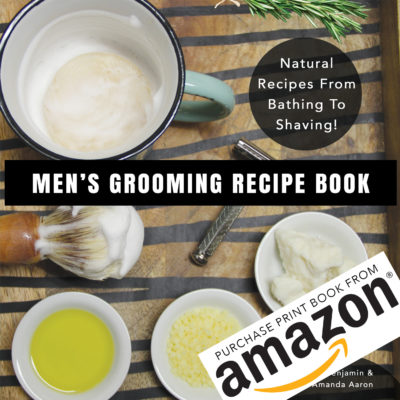
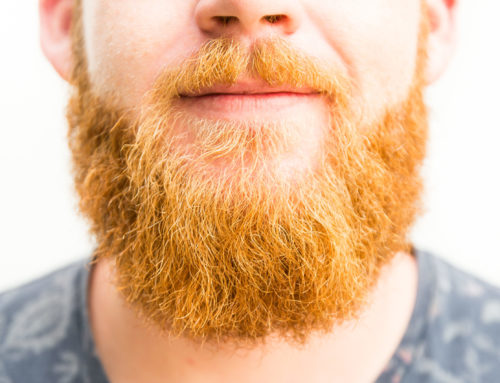
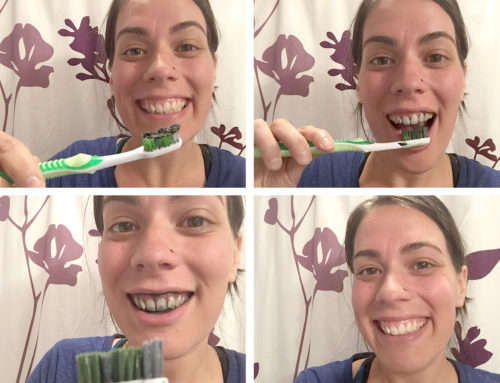
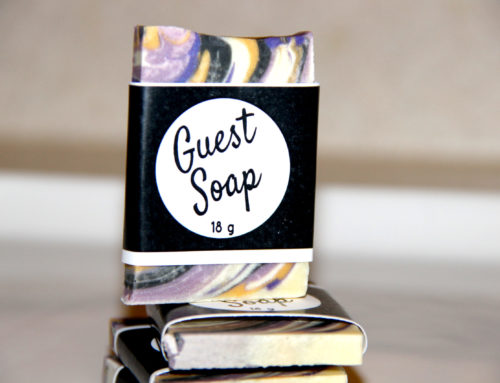
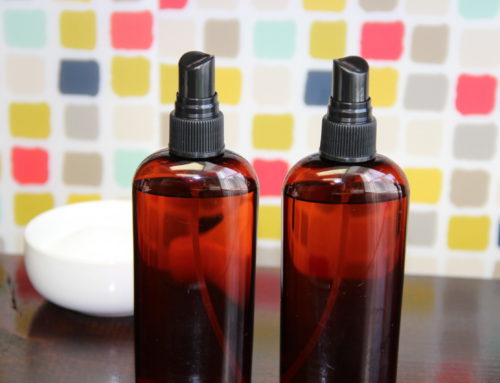

I was pleased to read your post. I tried many times this oils. But no one suits me. Which oil works for me?
Hi, I’m starting my men grooming line, and I found a company that sales the base for the beard oil. The only thing there missing is almond oil, and coconut oil. I bought there unscented 32 oz bottle, what percentage should I use to add the almond oil and coconut oil? Also how many drops of fragrance oil should I use?
I’m surprised your blend has so much almond. It seems like the common ones as top ingredients are jojoba and argan. Do you mind sharing why so much almond?
I’m still in the learning stages!
It is really about personal preference, but also expense! Almond is much, much less expensive than jojoba and argan. But that isn’t the only reason…I really appreciate that almond is not only cost-effective, but also non-greasy and great for follicles. I hope this helps!
Hey there! Thanks for all the info. If I am just starting to experiment with creating my scent for my oil and don’t want to commit to 10oz yet, I am making the 1oz bottles individually and adding the essential oils by drops. Is there a max amount of drops that I should be adding. Right now I am currently adding 5 drops sandalwood, 3 drops rosemary, 2 drops clary sage… does this fall under the right ratio for essential oil to carrier for 1oz bottle or am I adding to much essential oils?
Hello Yecid. Great question. So, as a general rule of thumb, 1 drop equals 0.05 mL, which also (as a general rule of thumb) is also equal to 0.05 grams.
If you are adding 5 drops sandalwood, 3 drops rosemary and 2 drops clary sage (great blend, by the way!), that totals 10 drops, which is approximately 0.5 grams.
Another way of looking at it is that approximately 20 drops is equal to 1 gram. Again, this isn’t perfect, but it is what I use. I hope this helps!
Thanks Benjamin! That does help! I mainly wanted to confirm that I wasn’t over adding essential oils, but it sounds like at 10 drops total (0.5ml), if I wanted to, I still have room to add maybe 8-9 more drops, but I don’t know if I will as I like my current ratio 🙂 . To be clear, my maximum essential oil per 1oz/30ml bottle should be no more than 19 drops, 0.9ml/grams (3%), Is that correct?
& thanks, I’ve been trying different blends for a while and this is one I really like.
You got it! 18 or 19 drops would be about 3% of 1 oz / 30 mL.
Yea, I’m going to have to try your blend. I absolutely love clary sage.
Thank you for this informative article Benjamin! I’ve had several men ask me about beard oil recently and have decided to try and make it. I’ve looked in the past and was concerned about the prices of the oils but from talking to several men, they are willing to pay the price! I do have a question, I’ve noticed several other recipes include adding Vitamin E oil. Do you find this necessary? Thanks!
You certainly can. I am seeing it more and more as well. It does help stabilize the other oils, so it can’t hurt!
Ok, thanks! How much would you recommend using?
I think as little as 1% would be plenty.
Great! Thank you for your response!
Hi Benjamin,
Thank you for sharing. May I ask how long would a beard oil be good for, before it expires?
Thank you for such a well organized and detailed post! I made a beard oil for my son but I believe I will reformulate it. I have such a weakness for pretty bottles and love the square ones!
Me too! The square blake bottles are the best!
Benjamin, you give the EO blend as 30% Lime, 25% Hemlock and 25% Rosemary, which totals 80%. When I do the math of 4 grams Lime, 3 grams Hemlock and 2 grams Rosemary, 9 grams total it’s actually 44.4/33.3/22.2. Thanks so much for the recipe.
Yep that should be 50% Lime…I caught that the other day! Thank you!
Thank you Benjamin for sharing such a detailed post. I always had problems converting ounces to grams in recipes but you have made it easier for me to tackle my other recipes too. I have been trying to work out the good oils for beard oil but you have explained it very well in this post. Thank you once again. Love all the posts by Amanda and yourself 🙂
No problem, Shirin! If you have any questions, please feel free to ask!
Thank you so much. I have been wanting to do a mens line but was afraid to start. This article gives me the push I need to create & have fun adding a mens line. You and Amanda rock!
You are welcome, Judy! Stay tuned for more…I think I am going to write one for beard balms and moustache wax.
Thank you Benjamin for sharin this information that was very nice of you, I really appreciated.
You are very welcome! If you have any questions, please let me know!
This was SOOOOO AWESOME!! While reading thru I was taking mental notes and I had a recipe that mirrored yours based on your recommendations I almost read your mind!!! Thanks
Good things! Great minds think alike!!!
This is awesome! I’m just starting in my men’s line. I hope to get your book soon 🙂
Good things! Let me know if you have any questions!
Thank you! This article was informative and grabs my attention. I have been wanting to create a beard oil. You saved me lairs of work!! Thank you, again!
No worries at all! If you have any questions, don’t hesitate to ask!
Thank you so much Benjamin for sharing such a detailed post.
love the frosted bottles. 🙂
You are very welcome, Jeanne. If you have any questions, please don’t hesitate to ask!